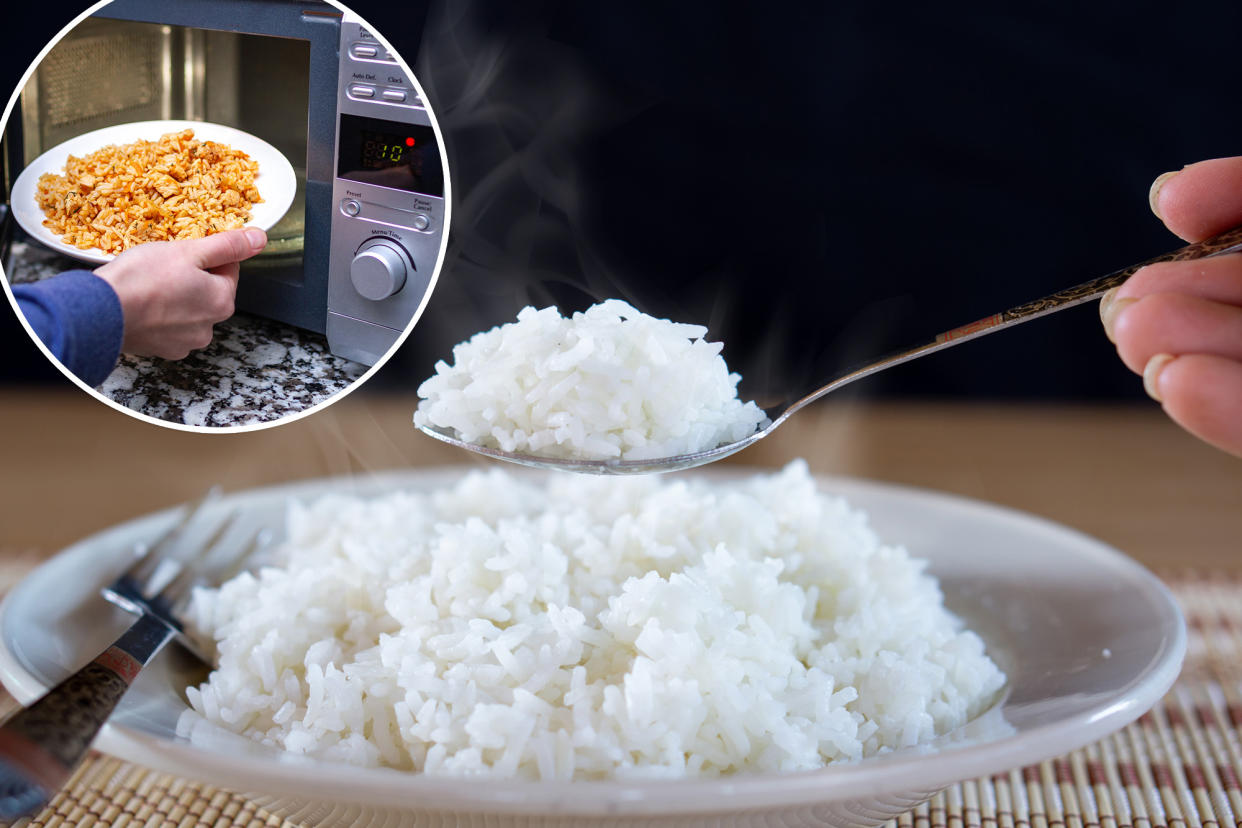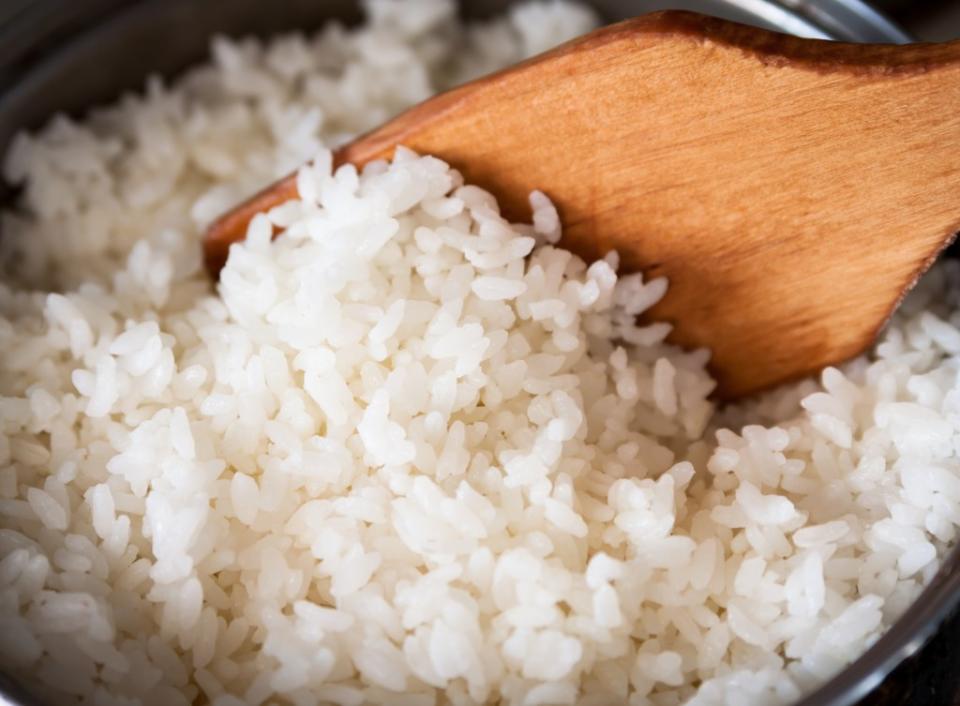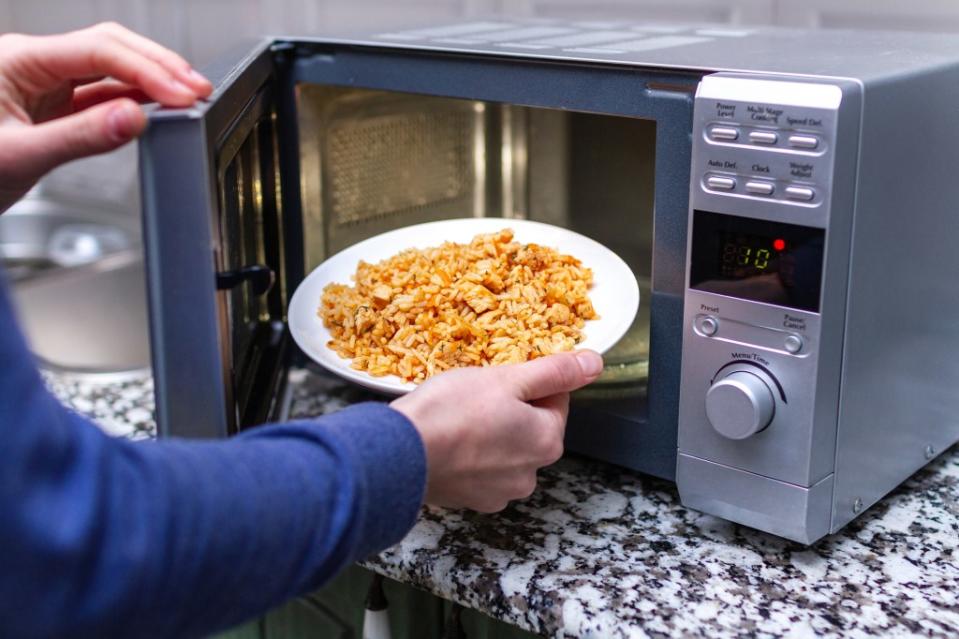How to properly reheat leftover rice and prevent ‘fried rice syndrome’

Rice-is averted!
Food experts are sharing tips on how to properly store and reheat leftover rice — you can become ill if you don’t take the right precautions.
“Reheating rice doesn’t usually pose any outright danger, but there are risks associated with doing it incorrectly,” Jen Messer, a nutrition consultant and registered dietitian at Jen Messer Nutrition, told USA Today this week.

Rice may contain spores of the common bacterium Bacillus cereus, which can release toxins that cause two types of food-borne illnesses — diarrheal and vomiting.
“[The bacteria] survives the initial cooking process as a spore and if [the rice is] left out at room temperature, it’ll produce toxins,” Emily Hovis, an assistant teaching professor at the University of Washington School of Public Health, explained in March. “So even when you reheat [rice], you’re killing the vegetative cells, you’re not destroying the toxins.”
Some 63,400 cases of Bacillus cereus illness are reported in the US each year, according to the Food and Drug Administration. The phenomenon is known as “fried rice syndrome,” even though Bacillus cereus can be found on pasta and potatoes as well.
Hovis said symptoms can emerge within 6 to 12 hours. Though it’s not life-threatening, serious infection is more likely for people who are immunocompromised.
Most patients recover within 24 hours — keeping hydrated is key.

Shelley Rael, a registered dietitian and nutritionist based in Albuquerque, New Mexico, told USA Today that bacterial growth stems from not getting rice in the refrigerator fast enough after cooking it, keeping it in the fridge too long, or not reheating it properly.
To start, cook rice at a high temperature — Bacillus cereus can multiply between 40 and 140 degrees Fahrenheit, also known as the “danger zone.”
When done, don’t leave the rice sitting out at room temperature for more than two hours — or more than an hour at warmer temperatures (like at a potluck).
Store it in a container that can be sealed with a lid and put it in the fridge. But don’t keep it there for more than three to four days.

If you plan to reheat the rice in a microwave, Messer suggests adding a bit of water or broth beforehand so it stays tasty and fluffy.
The most important part is to make sure the internal temperature of the rice reaches at least 165 degrees Fahrenheit. Use a food thermometer to double-check.
Tips for cooking rice safely
Hovis recommends cooking smaller batches of rice in a rice cooker instead of one large batch.
If you keep the rice in a rice cooker on the “keep warm” setting, use a thermometer to make sure it stays at least 150 degrees.
Don’t put a hot, covered pot of rice in the fridge — use several smaller containers instead.
Once the rice is in a container, place it right into the fridge.
When in doubt, throw it out.

